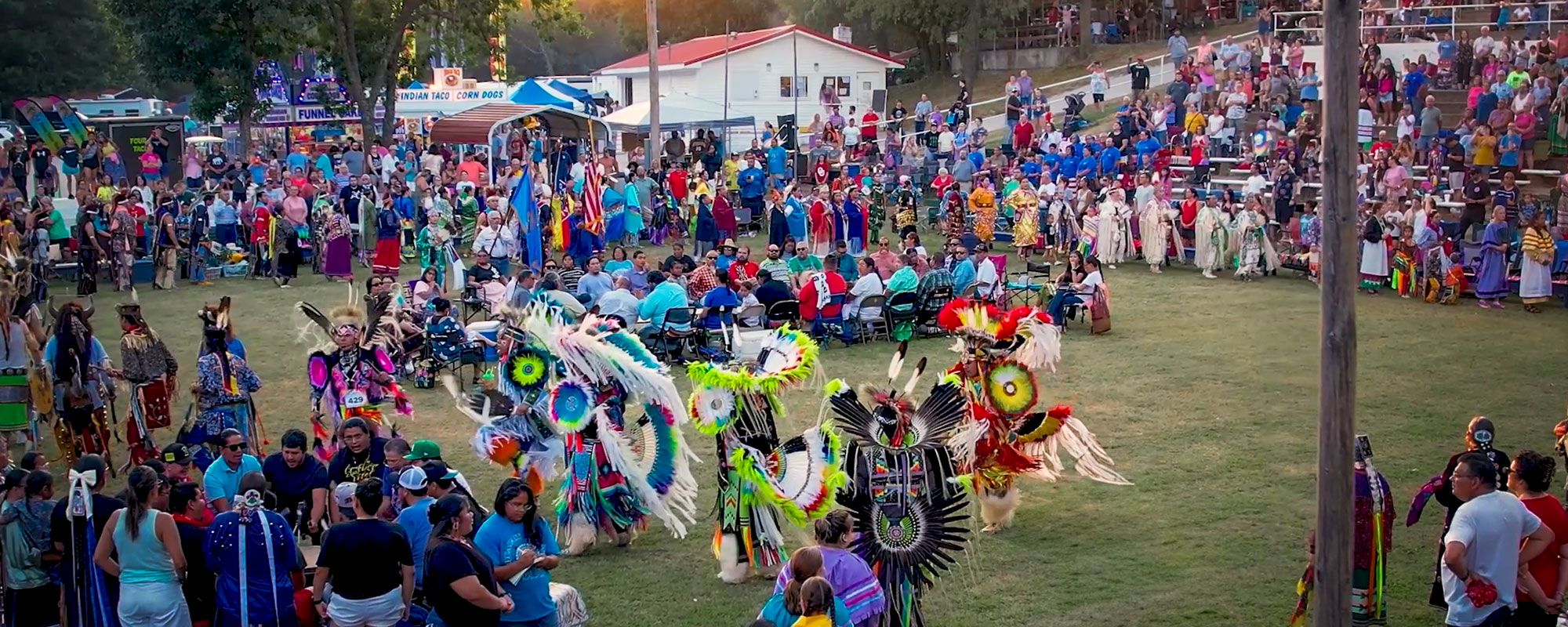Two years ago, Amy Covell-Murthy traveled 962 miles to Arkansas to meet with members of the Quapaw Nation and complete a transfer of human remains.
But her journey west was not merely transactional. Covell-Murthy, who is the archaeology collection manager and head of the Section of Anthropology at Carnegie Museum of Natural History, was there to connect. She immersed herself into Quapaw culture by volunteering at their fall gathering, learning how to play Quapaw dice, helping set up for the Stomp Dance, and selling raffle tickets.
It was repatriation in action—the culmination of a decade of consultation between Carnegie Museum of Natural History and the Quapaw Nation. What evolved was an organic connection between the museum and the Quapaw people, and a lasting friendship between Covell-Murthy and Quapaw Nation members Carrie Wilson and Betty Gaedtke.
“It was an honor to be able to experience the food, fun, and camaraderie of the fall gathering,” Covell-Murthy says, “but my favorite part was meeting Carrie and Betty.”
“It’s not just business,” says Wilson. “It’s more than that.”
Wilson and Gaedtke have continued to work with Covell-Murthy on repatriating objects and remains. And now, their partnership has extended to co-curating an exhibition, Keeping Traditions Alive.
This yearlong exhibition, which was unveiled in the Alcoa Foundation Hall of American Indians on Indigenous Peoples Day, is the first in a series featuring individual tribes that will be rotated annually on that October holiday. In addition to images and text telling Quapaw stories, the exhibition includes a display case that contains objects sent by the Quapaw Nation.
Visitors will find images of modern-day life, including culinary arts such as fry bread preparation and celebrations like a Quapaw Powwow, plus items such as a turtle shell shaker used in dances. The exhibition also contains a Quapaw pot and dog effigy vessel that Gaedtke, an artist, created using her people’s ancient pottery practices, showing the continuity of traditions that have survived.
“It’s all about making people aware we’re still here,” Gaedtke says. “We do still exist, and we’re thriving.”
For this exhibition, Gaedtke sewed a traditional Quapaw dress using cloth gathered from used flour sacks and featuring the color red, which is worn by firstborn sons and daughters.
Gaedtke estimates there are now about 6,600 living Quapaw. Her grandmother was one of the last purebloods. “There aren’t many in the tribe who are still here and live that life,” she says. “I can actually remember and feel obligated to pass it along while I still can.”
The project has been inspired by ongoing compliance and reparation work, something the Museum of Natural History has been addressing since 1990. That year, federal law dictated the protection and return of Native American human remains, funerary objects, sacred objects, and objects of cultural patrimony through the Native American Graves Protection and Repatriation Act (NAGPRA). But Covell-Murthy says her focus has been on more than returning human remains and cultural artifacts.
“We’ve been prioritizing relationships over objects,” says Covell-Murthy.
The museum has been working to repatriate the remains of about 800 individuals—mostly of Native American descent. So far, the remains of more than 100 individuals have been returned to their communities.
“We’ve been prioritizing relationships over objects.”
Amy Covell-Murthy, archaeology collection manager and head of the section of anthropology, Carnegie Museum of Natural History
Wilson, the Quapaw NAGPRA director, has repatriated more than 35,000 cultural items for her people. The Quapaw Nation’s ancestral homelands are in the Lower Ohio River Valley, but after forceful removal over time, today the tribal capital can be found in Quapaw, Oklahoma.
The co-curated exhibition approach provides a platform for authentic, living voices. Its aim is to let museum visitors know that Indigenous communities aren’t relegated to the past.
The project flowed differently than most developed by Anna Mirzayan, the content developer and writer for exhibitions at the Museum of Natural History. Typically, she meets with experts to hear about their research, then develops and writes a story in the museum’s “voice.” But in working with the Quapaw, she notes, Wilson and Gaedtke developed the story, and the museum kept the content explicitly in their voices.
Because of the first-person narrative style, Mirzayan thinks this exhibition reads more like a story than traditional labels. “Betty and Carrie’s words come to life in an organic, authentic way that highlights the Quapaw Nation as a living, contemporary culture,” Mirzayan says.
She explains how co-curation, or community curation, can be a “justice-oriented” practice of empowerment. It helps build democratic relationships between institutions and communities who then get to take control of their own stories, and how they’re told.
“One of our core values is inclusive perspectives—the idea that different kinds of knowledge are valuable and important,” Mirzayan says. She says co-curation is also vital in being accountable to the museum’s own ambivalent history and practices as a 129-year-old institution. “It requires us to reflect on how we acquired and treat the objects and specimens in our care.”
Both Wilson and Gaedtke look forward to sharing their story with a new region. “The Quapaw have no real affiliation to Pennsylvania that we know of,” Wilson says, “but the relationship that developed through the NAGPRA process—and the collaborative effort that went into it—lets people in Pittsburgh know, even though we’re removed, there’s a connection there.” “This could not have happened if Amy and Carnegie hadn’t made that extra step to engage with the Quapaw people—having a kind attitude toward wanting to experience us and engage,” Wilson says. “It was an organic and natural step forward.”
Receive more stories in your email
Sign up
